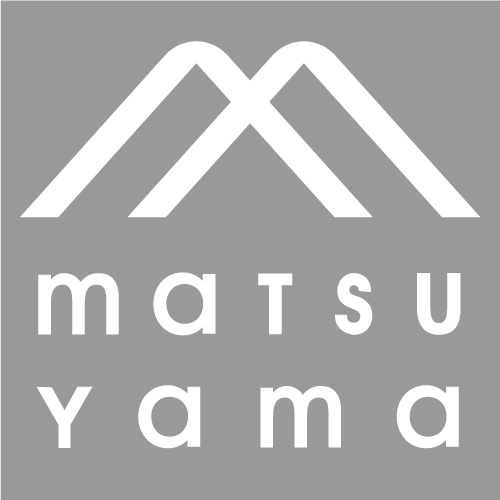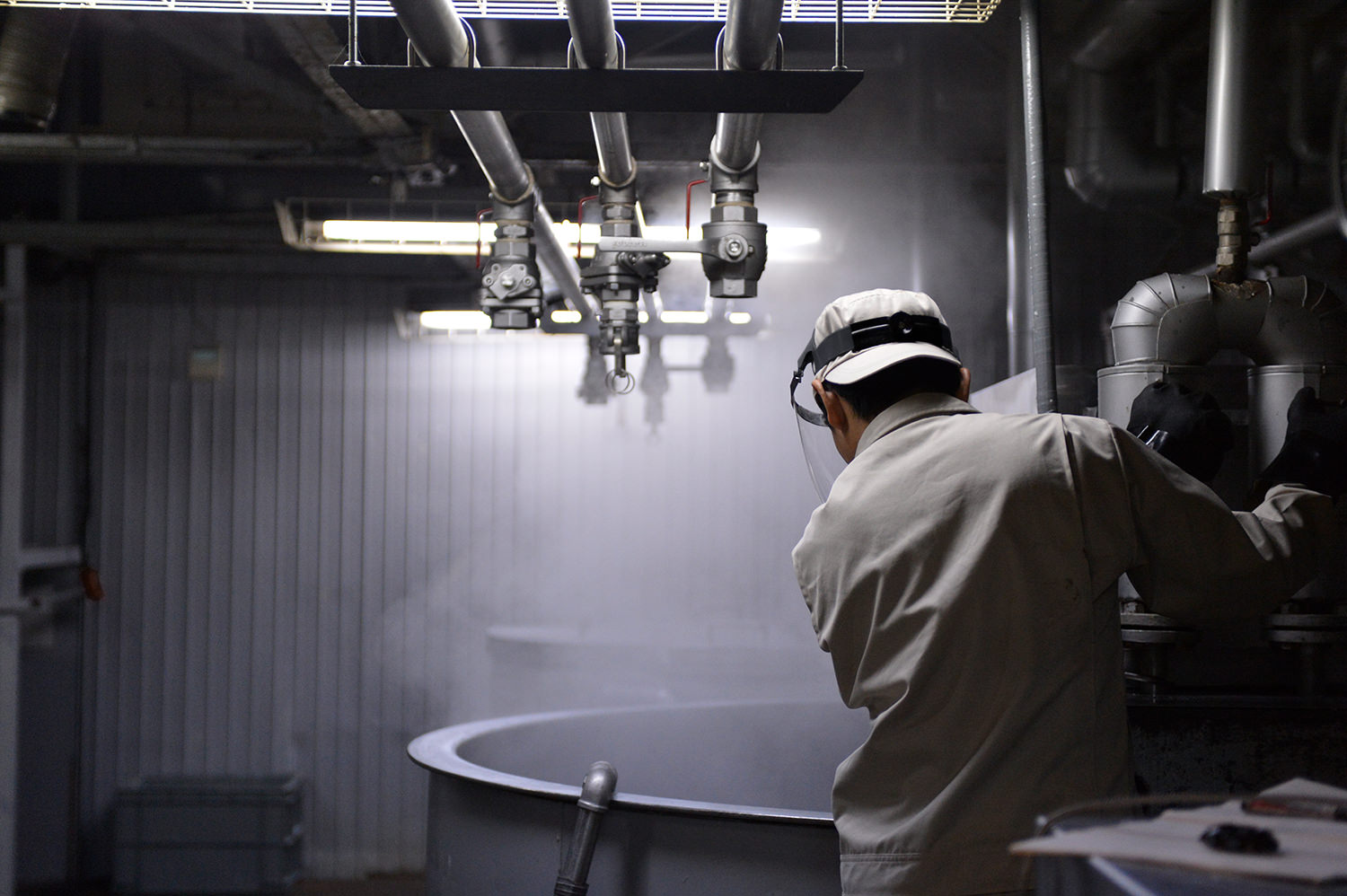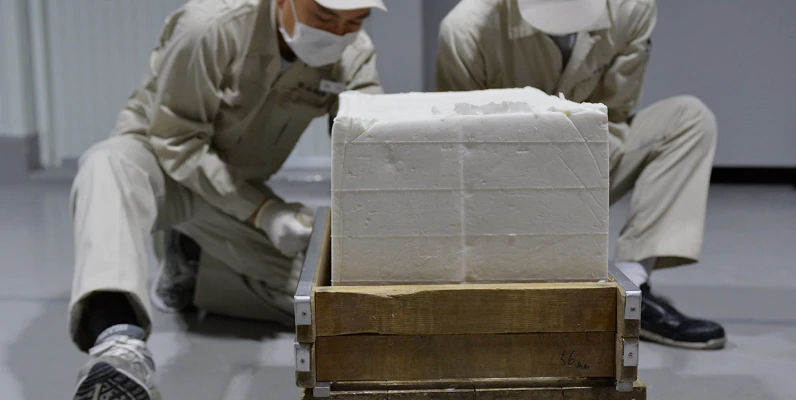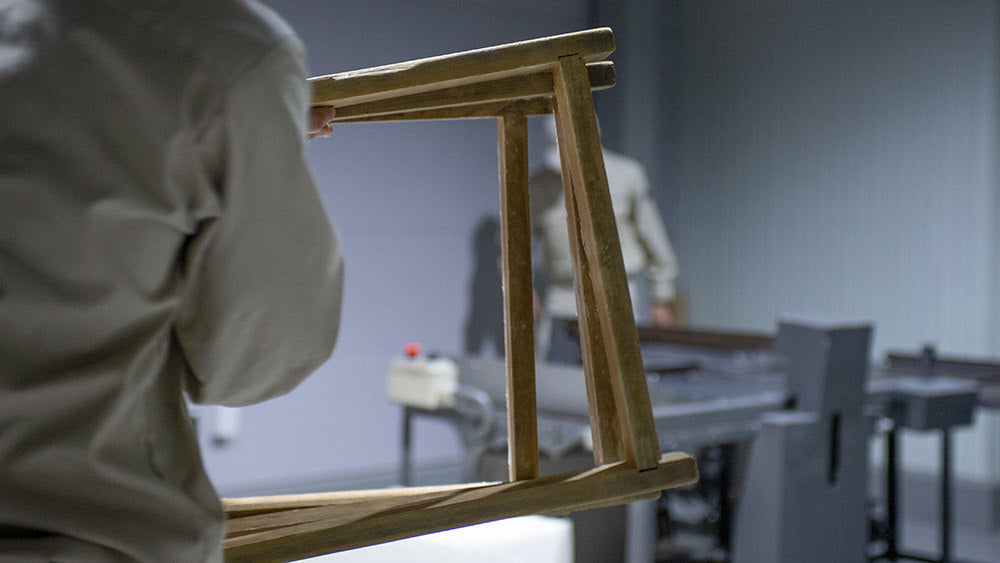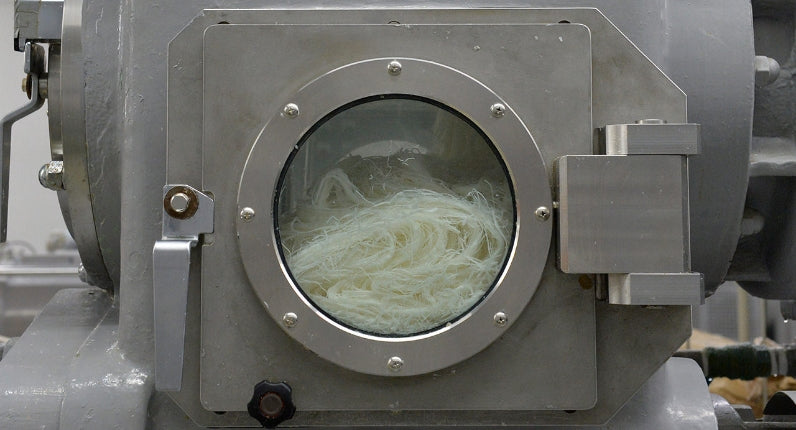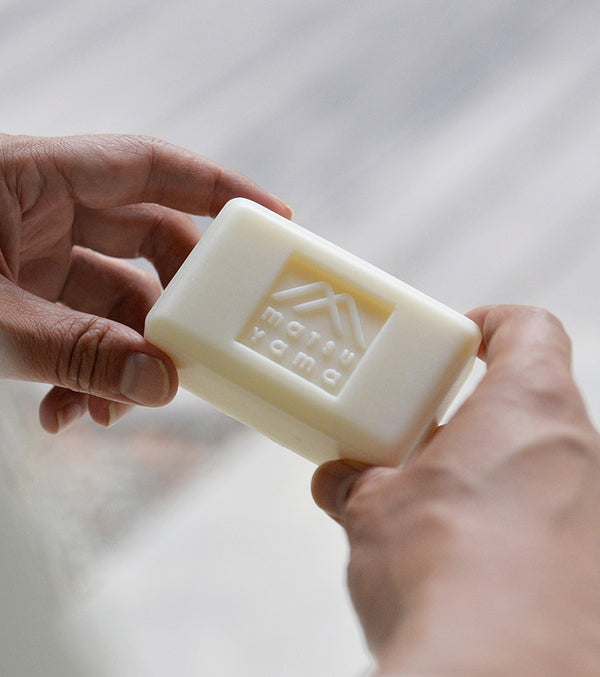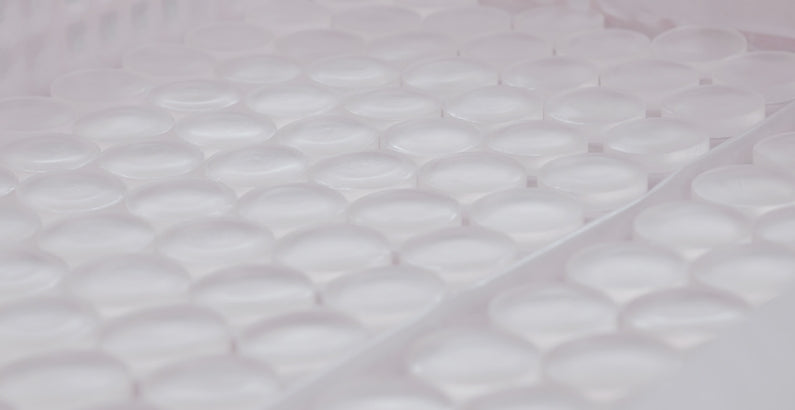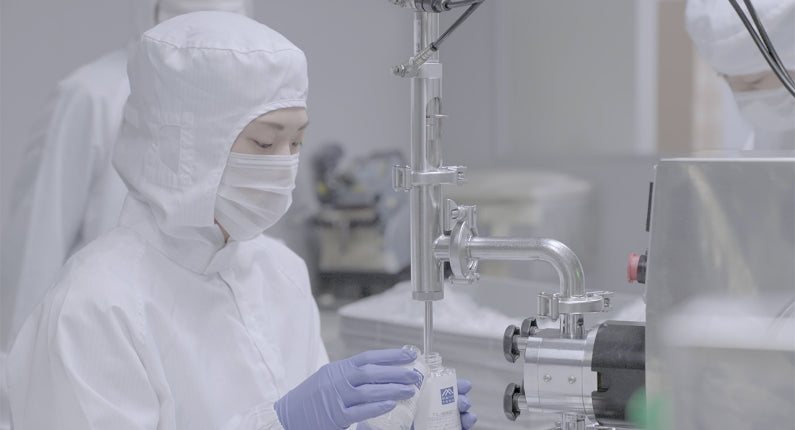The kettlehouse is where soap is made using the traditional kettle-burning method. The process of saponification, salting out, standing, and finishing salting out takes 100 hours to complete.
The fats and oils are placed in the kettle, and an aqueous solution of caustic soda is added while heating and agitating the fats and oils. The fats and oils are hydrolyzed and separated into fatty acids and glycerin, and the fatty acids react with the caustic soda to form soap. This is saponification. Salt is then added to collect the soap molecules in the upper layer of the kettle, and impurities are precipitated by salting. After salting, the kettle is kept at a constant temperature to allow the purity of the soap to increase (seichi). 24 hours later, the soap is salted again to produce the soap base.
The purity of Matsuyama Yushi's soap base is 98%. Of the remaining 2%, 1.2-1.7% is glycerin. Glycerin, which is said to be the oldest moisturizer and relieves tightness, is naturally blended into the soap. In addition, when the fats and oils are fired in a kettle, they become soap with a cleansing power suitable for human skin. That is the main feature of kettle-fired soap. That is why we have been carrying on the traditional process for over 70 years.
